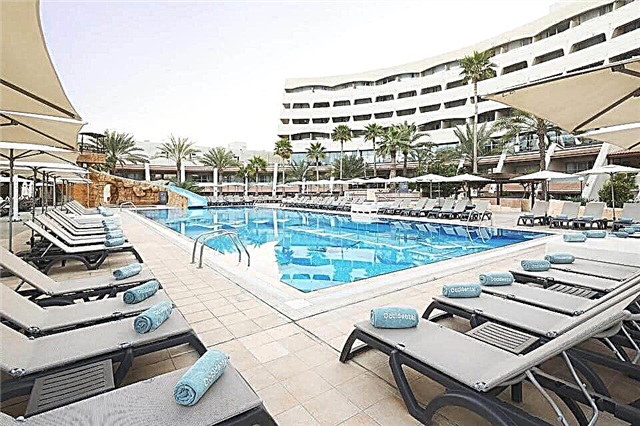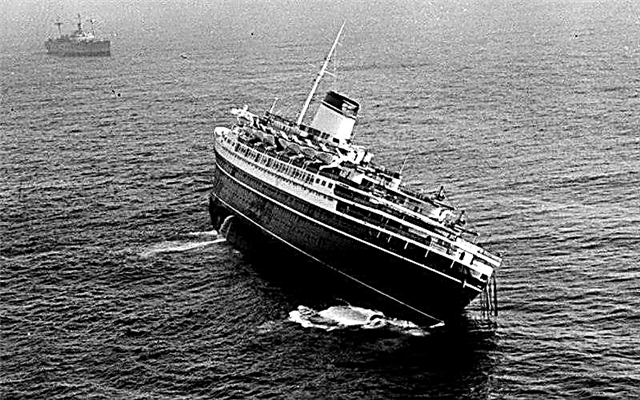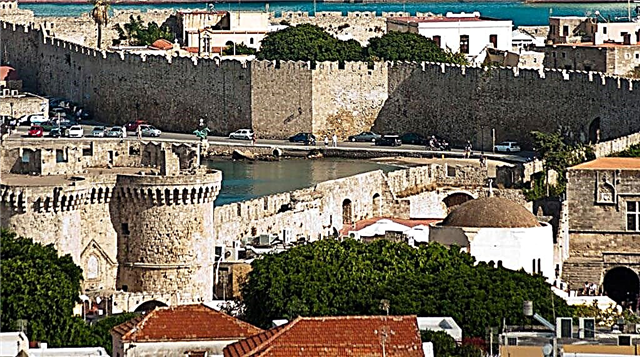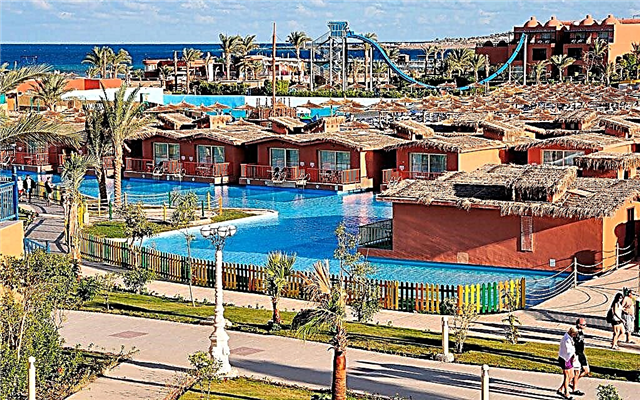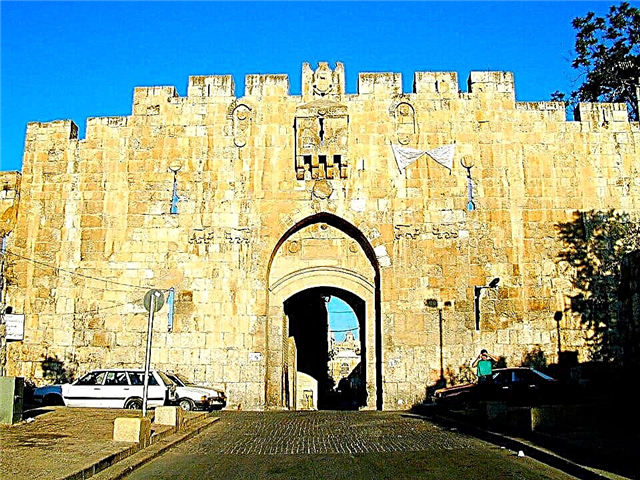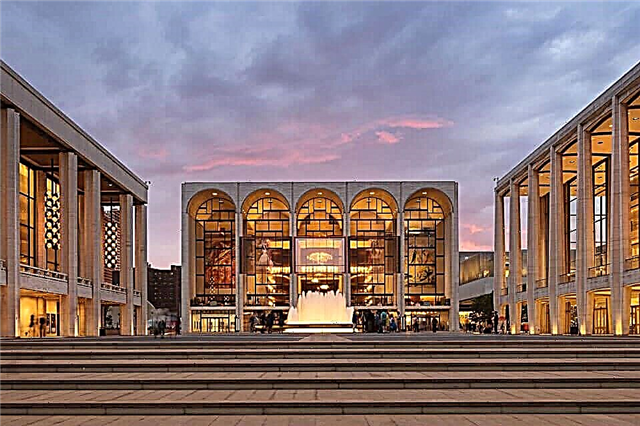Address: Russia, Yaroslavl region, Pereslavl-Zalessky, pl. Krasnaya, 3
Start of construction: 1152 year
Completion of construction: 1157 year
Coordinates: 56 ° 44'11.9 "N 38 ° 51'08.4" E
Cultural heritage site of the Russian Federation
Content:
The oldest Cathedral of Pereslavl-Zalessky rises above the city's Red Square and is surrounded by an old earthen rampart. This majestic temple is a real decoration of the historical center of the old Russian city. It is believed that it was laid simultaneously with the foundation of Pereslavl in 1152 by the Moscow prince Yuri Dolgoruky, and completed 5 years later already under Andrei Bogolyubsky.
The architecture of the Transfiguration Cathedral
The walls of the cathedral are made using the half-volume technique. During the construction process, two parallel walls were first made of well-hewn limestone, folded almost dry. Then the space between them was filled with fragments of stone and rubble, and poured with mortar. The total thickness of the walls in this case reaches from 1 m to 1.3 m. The walls of the famous Church of the Intercession on the Nerl were made using the same technology.

View of the cathedral from st. Soviet
Initially, the Transfiguration Cathedral had a height of 22 m. But over many centuries the temple has grown into the ground by almost 90 cm.
For the foundation, they used a technology that was already outdated by that time, and laid it out of large cobblestones, fastened with a lime mortar. The builders of the temple brought the foundation to dense clay at a depth of 1.2 m. And in order for such a foundation to withstand the weight of the stone structure, it was made 1-1.5 m wider than the walls.
The external decor of the cathedral is austere and simple. The drum supporting the head is decorated with a curb and a crenellated belt made of brickwork. And the top of the three apses is decorated with an arcature belt, a curb and a carved half-shaft.
Archaeologists have not found any evidence that annexes or side-altars ever existed near the temple. This suggests that The Transfiguration Cathedral has survived to this day practically unchanged. Considering that this temple is more than eight and a half centuries old, this is a great rarity. Spaso-Preobrazhensky Cathedral and the Church of Boris and Gleb in Kideksha are two preserved white-stone churches, of all built in North-Eastern Russia in the pre-Mongol period.
The significance of the Transfiguration Cathedral in history
The cathedral was at the same time a princely church and a garrison of the fortress. Many appanage and Pereslavl princes were baptized there, including Yaroslav Vsevolodovich (1191) and his son Alexander Nevsky (1220). When Alexander was 5 years old, he, together with his six-year-old elder brother Fyodor, underwent a ceremony of initiation into warriors in the cathedral, the so-called “princely tonsure”.

View of the south facade of the cathedral
The ceremony of "princely tonsure" was conducted by a very respected priest at that time - Bishop of Suzdal Simon. The last Pereslavl princes Dmitry Alexandrovich (died in 1294) and his son Ivan Dmitrievich (died in 1302) were buried in the cathedral.
During the Tatar-Mongol invasion of Russia, the Transfiguration Cathedral was ravaged many times, as a result of which it lost most of its accumulated values. And after each trial, this church was rebuilt again.
In church life, the temple is known as the site of the cathedral of the saints of the Russian Orthodox Church (1310). After 44 years, Sergiy of Radonezh was ordained here as a priest. Moreover, Tsar Ivan the Terrible came to the Transfiguration Cathedral several times on pilgrimage.
During the years of Soviet power, the temple worked intermittently, and in the end was closed. Many valuable artifacts, church utensils, jewelry and expensive gifts were removed from the cathedral, including a tabernacle made of wood, a silver starlet, symbolizing the Star of Bethlehem, and a ladle of the 16th century.
In 1958, a monument (traditional bust) to Prince Alexander Nevsky by sculptor S. Orlov and architect L. Kapitsa was erected on Red Square in front of the temple. The prince is depicted on this monument in a helmet and chain mail.

Monument to Prince Alexander Nevsky against the background of the Transfiguration Cathedral
For many years, while the cathedral stood empty, its roof leaked, and the floor of the temple and its walls began to deteriorate due to moisture. Restoration work took place in the second half of the last century and in the early 2000s. During them, the walls of the building were strengthened, the roof was replaced, the cross was gilded and the head of the cathedral was painted. Restoration work inside the building is still underway.
Interior painting, decoration and icons
The interior of the temple is as simple as its exterior. In the second half of the 12th century, the interior walls of the cathedral were painted with frescoes. Unfortunately, they were lost during the restoration of the temple in 1893. Only two small fragments of the murals were preserved. And now they are on display at the State Historical Museum. Later frescoes, made in the 19th century, were not of particular artistic value, so they were cleaned up during modern restoration. And now there are no murals on the walls of the Transfiguration Cathedral. In the 19th century, a new marble iconostasis in the pseudo-Byzantine style was installed in the cathedral, which has survived to this day.
In the 30s of the last century, large restoration work was also carried out here. During them, yellow, green and brown majolica floor tiles were found. The same white tiles with blue ornaments, according to the restorers, most likely adorned the church choirs.

View of the cathedral from the rampart
One of the miraculously preserved relics is the 12th century silver portir (church bowl), which was donated to the cathedral by Yuri Dolgoruky. Although some researchers believe that this portir was made by the Vladimir-Suzdal silversmiths later, in the 13th century, and was donated to the temple by Yuri Dolgoruky's grandson, Yuri Vsevolodovich. The smooth bowl has a simple shape and is adorned with medallions skillfully carved into silver, depicting Christian saints. And an inscription runs along its crown. Now this precious portile is kept in the Armory Chamber of the Moscow Kremlin.
And the Tretyakov Gallery exhibits one of the most famous temple icons of the cathedral - "The Transfiguration of the Lord", painted by the famous icon painter Theophanes the Greek in 1403. All over the world it is recognized as a masterpiece of Russian icon painting. This icon came to Moscow for restoration in the 1920s, and was never returned to Pereslavl. And today an exact copy of it is exhibited in the Transfiguration Cathedral.
This ancient temple continues to amaze researchers and historians today. In 2014, work was carried out to strengthen the foundation, and during them the seal of the archimandrite of the XIII-XIV century was discovered.
Opening hours and ticket prices
You can get inside the cathedral from May 1 to October 1. It is open from 10:00 am to 6:00 pm daily, except Tuesday. Now the entrance to the cathedral is temporarily suspended until the completion of restoration work (according to the plan - at the end of 2015).

View of the Cathedral from Red Square
Admission tickets for adults are 50 rubles, and for students and pensioners - 30 rubles. Ticket for 20-25 minutes a tour of the cathedral costs 250 rubles.
Church services in the church are held three times a year: on the day of the celebration of the Transfiguration, as well as on June 12 and September 12 - in memory of Prince Alexander Nevsky.
How to get to the Transfiguration Cathedral
The Transfiguration Cathedral is located at the address: Red Square, 1a. This is the very center of the city. The Moscow bus arrives in Pereslavl at the bus station, which is located in the southern part of the city, about 3 km from the Transfiguration Cathedral. From the bus station you can come to the center on foot, by taxi or by city bus.


